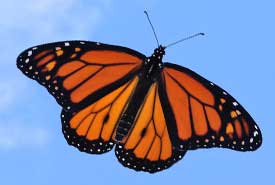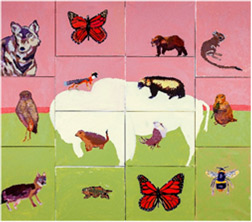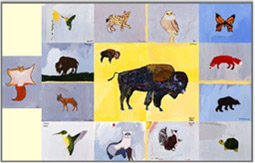Giving back to the next generation

Monarch (Photo by Steven Russell Smith)
I have a lot to thank the monarch butterfly for. Well, not just the monarch butterfly; I should give my Grade 6 teacher some credit too. My teacher helped our class raise and release monarch butterflies as part of a school project. Raising a couple of butterflies may seem like an elementary school science project, but raising a generation of conservationists is no small task. I didn’t know it then, but this project helped lead me to my passion in conservation.
As the engagement assistant at the Nature Conservancy of Canada (NCC) in Saskatchewan, I am learning how important inspiring the next generation is. Maybe it was the butterflies, or maybe it was my grandmother who taught me about the different species of birds at my cabin. But somewhere along the way, I was hit with the conservation bug, which has now developed into a full-scale passion for species at risk.
I believe that kids are inherently drawn to nature. It is easy for kids living in the modern world to be distracted from nature though. An attraction to the natural world needs to be nurtured and fostered to mature into a passion for conservation. And a passion and connection to nature is important for understanding why our natural world needs to be protected.
In Saskatchewan, NCC is partnering with Treaty Four Education Alliance schools to bring conservation into the classroom. I recently assisted in special presentations on species at risk to two classrooms, one for Ocean Man First Nation and Keeseecoose First Nation. It was my chance to pass on the passion that my Grade 6 teacher started in me.

Art presented by the students at Fishing Lake First Nation as part of the Learning the Land program. Art project facilitated by Michael Lonechild.
The Learning the Land program consists of classroom-based learning led by teachers, along with presentations from NCC staff, outdoor fieldtrips and an art project facilitated by well-known Cree artist Michael Lonechild from White Bear First Nation. This program is a component of NCC’s and Treaty Four Education Alliance’s Learning the Land program. It is designed to teach students about native prairie conservation and species at risk from both western science and Indigenous traditional knowledge perspectives.
As an NCC presenter, I want to impart as much knowledge as I can about different species and ecosystems, but an important part of our education plan is to have fun. To truly connect with nature it can’t always be about facts and figures, it also has to be about laughs and smiles. While all of our presentations start with an icebreaker and end in a game, possibly the best part of the presentations were the questions from the students.
Often, the kids could hardly hold in their excitement to ask their question. What made it so exciting for me was the knowledge that these kids came with. They were able to ask intelligent questions about species at risk because they already had knowledge passed down from their Elders. We heard many stories about walking with an older brother and identifying snakes, or how hiking with a grandparent led to an adventure. It was clear that their attraction to nature already existed. We hope that our program will encourage kids to take the next step into becoming lifelong conservationists.

Art presented by the students at Muskowekwan First Nation as part of the Learning the Land program. Art project facilitated by Michael Lonechild.
I feel really lucky to be helping with a program that respects Indigenous traditions while also teaching the latest conservation science. Colonization has had significant impacts on Indigenous communities’ relationship to the land, but it hasn’t extinguished a deep connection that goes back generations. That is why partnerships like the one with the Treaty Four Education Alliance are so important.
As a young student at Lakeland College, it wasn’t long ago that I was sitting in a similar desk as the kids I am now helping educate. It was in that desk that I was inspired to join the conservation movement. Hopefully I can now pass that inspiration on to the next generation.
I feel very fortunate that I get to help with such a meaningful project like Learning the Land. Long-term conservation needs many different voices and perspectives. No one person or group has all of the answers ― I know I don’t. But by making connections and partnerships, we will be able to face the future of conservation together.
The Conservation Internship Program is funded in part by the Government of Canada’s Summer Work Experience program.


